#Texada
Explore tagged Tumblr posts
Text



Winter has arrived its always dark.
I wish to do more to be more.
But I'm lost in time.
In this empty space.
0 notes
Text
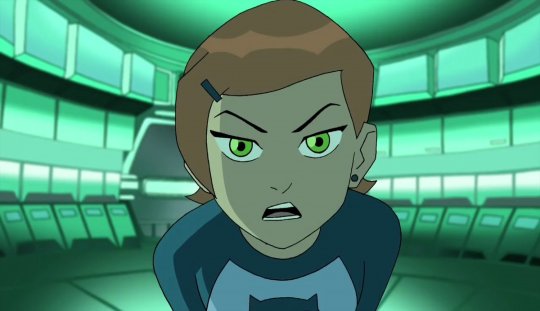
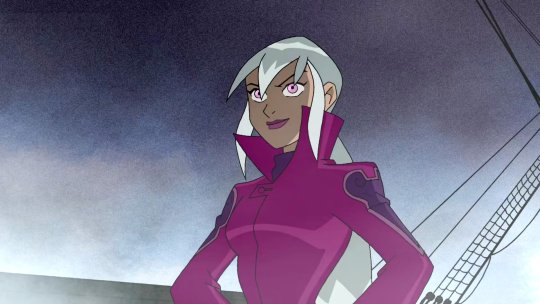


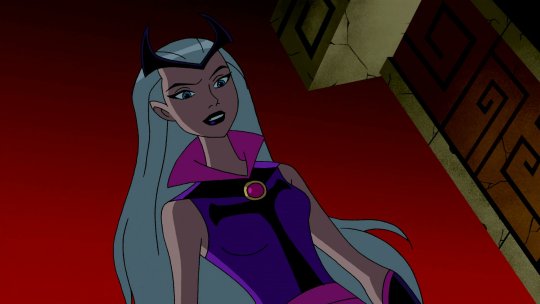

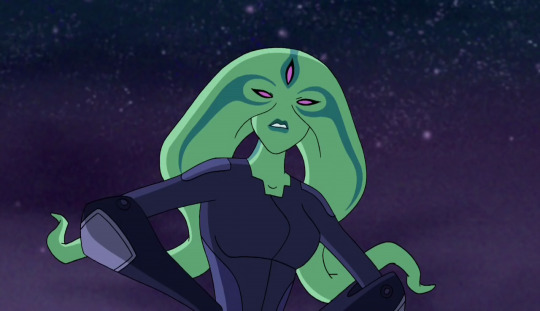
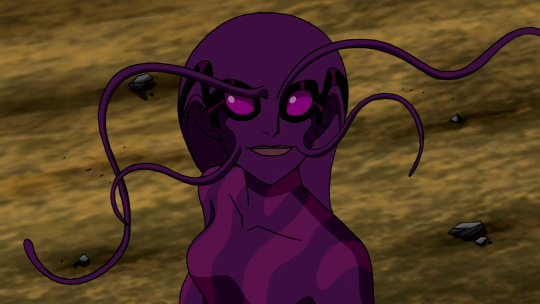
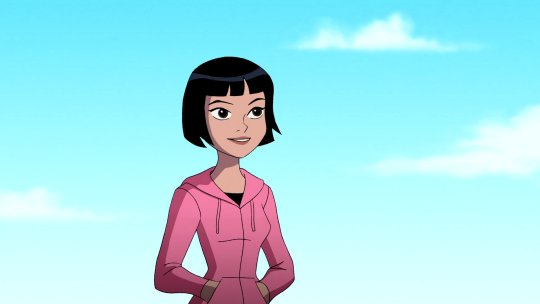
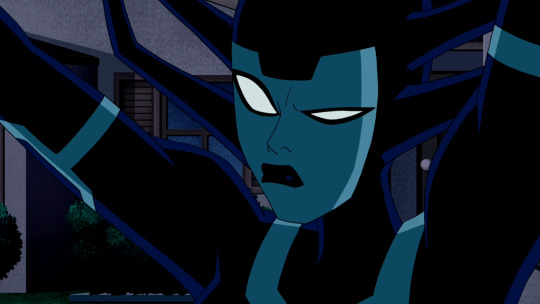
I have an entire fully fleshed out idea for a second Ben 10 reboot that is not only done in the same visual styles of the first three shows but also is a female-led TRILOGY of shows focusing on Gwen, Charmcaster, Sandra etc.
It's called the "Where The Magic Happens" Trilogy.
#gwen tennyson#charmcaster#sandra tennyson#xylene#camille mann#julie yamamoto#elena validus#meagan smith#ashley johnson#kari wahlgren#tara strong#beth littleford#grey delisle#vyvan pham#tia texada#ben 10#original series#alien force#ultimate alien#magical girls#action#horror#sci-fi
79 notes
·
View notes
Text
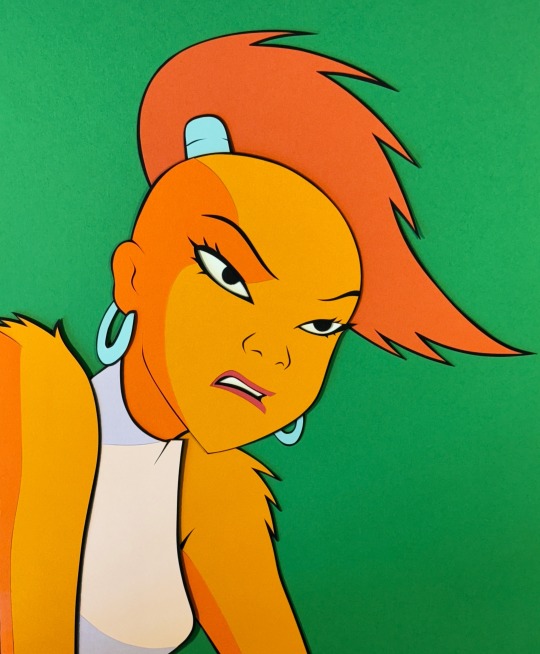
Heroes & Villains The DC Animated Universe - Paper Cut-Out Portraits and Profiles
Talon
Teresa was one of the many young people who were present for the so-called ‘Big Bang’ and was subjected to the mutagenic effects of the mysterious Quantum Vapor. The vapor changed those exposed to it, bestowing many of them with metahuman powers. These individuals came to be called 'Bang Babies.'
Like many other Bang Babies, Teresa's physical appearance was drastically altered. She took on avian features and gained the ability to fly. She could additionally emit a debilitating sonic scream.
Her powers not withstanding, Teresa was very upset about how her physique had changed, seeing herself as a freak who could never again be a part of the normal world. The villainous Ebon took advantage of Teresa’s anger and recruited her into his gang of super powered villains, The Meta-Breed. Teresa took on the alias of ‘Talon’ and dutifully attended to Ebon’s evil bidding. This resulted in multiple instances where Talon battled against the heroic Static and his allies.
When Dr. Donald Todd devised a serum that could reverse the effects of the Quantum Vapor, Talon was eager to participate in the test trials and hopefully be transformed back into a human. The serum proved successful and Teresa lost her powers and resumed her original human appearance. When Ebon stole Dr. Todd’s serum, hoping to alter it so to amplify his own powers, Teresa assisted Static in determining Ebon’s location.
Actress Tia Texada voiced Talon with the one-time villainess first appearing in the third episode of the first season of Static Shock, ‘The Breed.’
30 notes
·
View notes
Text

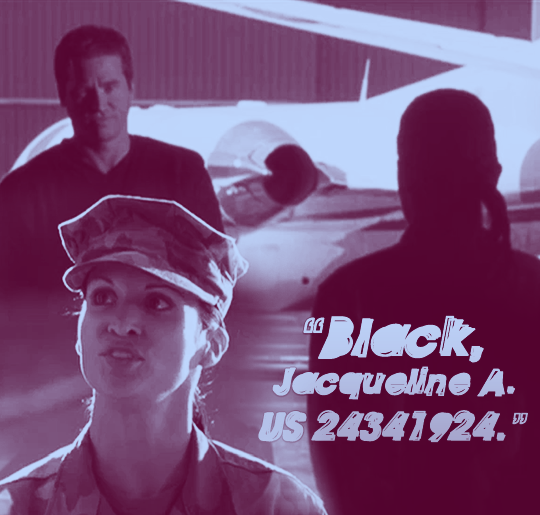
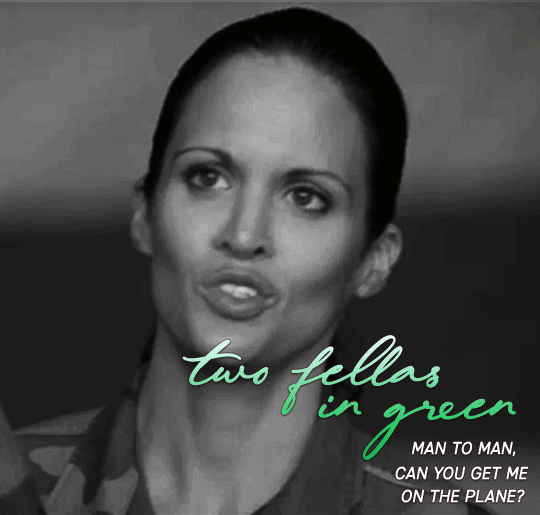

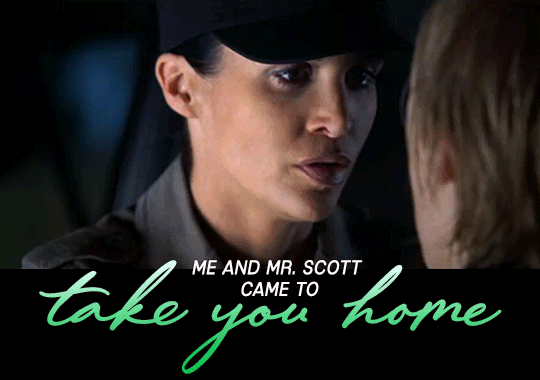
@pscentral event 23: arcs
the evolution of Scott and Jackie's relationship in Spartan (2004)
Thank you, Sergeant.
#spartan#spartan movie#spartan (2004)#david mamet#filmedit#val kilmer#tia texada#bipoc characters#latina actress#my gifs
23 notes
·
View notes
Text
Interviews: Val Kilmer & Tia Texada on Spartan
MARCH 9, 2004
BY PBADMIN
David Mamet has earned a reputation in Hollywood as one of the foremost screenwriters due to his sharp dialogue, interesting characters and innovative storytelling. For Spartan, his ninth film as a director, Mamet takes a fairly simple premise about the search for the missing daughter of a political figure and creates a rich tapestry of political intrigue and conspiracy.
At the center of the story is Agent Robert Scott, played by Val Kilmer, a former Marine that has become an agent of the government’s Special Forces used to deal with tough situations that they do not want traced back them. For this mission, he works with two rookies, played by Derek Luke (Antwone Fisher) and Tia Texada of the NBC drama “Third Watch”, to try to find the girl, hitting roadblocks at every turn.
ComingSoon.net sat down and spoke to Val and Tia about their tough roles in this intriguing political thriller. Of course, our first question was how they got interested in David Mamet’s latest project:
Val: “I liked the story. It’s a very simple premise about what happens when the daughter of a high ranking political figure goes missing and the secret service doesn’t know what to do about it. It’s a strange group, the secret service, because they don’t have a leader. It’s not set-up like the military because each one is supposed to be able to act as the leader when it comes up. As consequence of that, certain things can happen and they can’t coordinate with every organization to get the girl back.”
Tia: “When I read the script, I loved the role [of Jackie Black] immediately, because she was so committed and dedicated. I felt she was like a nun; her commitment was like a nun’s commitment would be to God. These people in the Special Forces, they give their lives over to the country. We had specific instructions that everything was about the mission, so it didn’t matter what else was going on.”
And what about how it is to actually work with Mamet? Is he as difficult to work with as some might think?
Val: “He has an opinion and he’s outspoken, and not at all shy. But he’s fantastic. He’s funny as hell and he cares pretty much about everything. He always has an observation that is worth hearing and he writes like mad!”
Tia: “Mamet’s an amazing playwright, so there’s always an intimidation, but he makes everybody want to do their best with his energy and what he puts out there. David’s dialogue is very crisp; it has a rhythm and a cadence. It was great seeing Val working with David, because I would never put them together, just from their styles and backgrounds, but they worked so well together. David definitely has a style and knows what he wants, so sometimes it would be different than what I’d bring. He’ll be very specific, and you wonder why he wants to see it like this, but when I see the film as a whole, I can see what he was trying to create, and where my character, Jackie Black, fits into that. When you work with David, everybody wants to come back.”
For their roles, they had to play characters that had to make quick and often difficult decisions. It was interesting to find out how they worked at developing their characters:
Val: “We had a technical advisor, Eric Haney, who was around quite a bit. He was very helpful, because he has lived this same life beyond the government, like this character, where his own actions, become technically-speaking illegal. When the government is doing something illegal, that’s the dilemma.”
Tia: “Haney was a member of the Delta Force for years, and he wrote a book called “Inside the Delta Force”. He helped me learn how to speak the dialogue, how the military would speak to each other with a certain respect, and how sometimes, you’d have to block your sexuality out. I had to pull back on things that maybe I would do naturally.”
Val: “They speak very casually, but they’re amazing characters, because they are trained like a brain surgeon or like a combat medic, where someone’s life is on the line. Your ability to handle that stress and do something that is as intricate as getting inside someone’s body and put it back together is how they live. It’s a very, very stressful job. Most of them die. There’s 0% chance of most of their missions succeeding. They’re genuine warriors, although they’re not warmongers, because they like it when there’s peace time, but they’re also action junkies that thrive in this place in life where they pretty much know they’re going to die.”
Tia: “Eric explained to me that there would be no women in this organization at all, so it’s interesting that David wrote her as a woman.”
Was there a lot of training involved?
Val: “I worked very hard on it, because you can’t really fake this sort of prowess that they have. They’re not like tough guys, and you don’t really see them in a crowd. That’s why they’re so good at their job. They’re very strong and very quick. I had a lot of weapons training and learned how to move like them.”
Tia: “I did my military training here in New York. It’s funny, because I was in such great shape, but you can’t tell. I thought I was going to be like in tank tops, but instead, I’m wearing men’s fatigues. They also trained me in knife fighting even though you don’t see it in the movie.”
Both stars had strong opinions on the movie’s political views, and how it reflects on the current government:
Val: “I think “Wag the Dog” (also written by Mamet) was a really good film representing what’s possible with the manipulation of media. I’ve very wary of news on television. I was very impressed with media analyst Neil Postman’s book “Amusing Ourselves to Death”, because his theory was that television doesn’t influence our culture, but it is our culture and that the presidency or anything that relies on television is now totally dictated by it. We saw that during Desert Storm where government officials were saying, “I won’t know what our policy is in relation to today’s battle, because I haven’t seen CNN yet.” They just started saying that, and it was shocking! That isn’t reality. That is entertainment. News is something that happens that matters to you, not something you watch on television.”
Tia: “It’s so interesting really what goes on in our world today, and I think that’s what David is so great at showing. The political aspect of it is what makes the movie intriguing, and it’s what pulled me in. There’s a lot of underlying things going on in our government, which we always wonder about. David is very interested in politics, so it was interesting to see his word on it.”
2 notes
·
View notes
Text

Now showing on DuranDuranTulsa's Action Theater...The Amazing Spider-Man (2012) on Peacock TV #movie #movies #actionadventure #comicbookmovies #superheromovies #spiderman #TheAmazingSpiderMan #andrewgarfield #emmastone #stanlee #RIPStanLee #ChrisZylka #RhysIfans #SallyField #DenisLeary #JamieFoxx #IrrfanKhan #MartinSheen #jakekeiffer #EmbethDavidtz #CThomasHowell #SkylerGisondo #JenniferLyons #tiatexada #MichaelMassee #campbellscott #MaxCharles #2010s #Peacock #PeacockTV #marvel #marvelcomics #durandurantulsasactiontheater #durandurantulsa
#spiderman#the amazing spider man#andrew garfield#emma stone#stan lee#rip stan lee#chris zylka#rhys ifans#sally field#denis leary#jamie foxx#irrfan khan#martin sheen#jake keiffer#embeth davidtz#c thomas howell#skyler gisondo#jennifer lyons#tia texada#michael massee#campbell scott#max charles#2010s#peacock#peacock tv#duran duran tulsa's action theater#duran duran tulsa#comic book movies#super hero movies#action adventure
1 note
·
View note
Text
2023 Year in Review
This is Ben Cox, Chief Product Officer here at Texada Software, sharing a recap of products and features we’ve launched in 2023! This past year, we focused on improving both our products and platforms - this includes improved web...
1 note
·
View note
Text
"By the 1930s a considerable state apparatus had emerged to monitor and regulate industrial conflict. At both federal and provincial levels labour codes had come about, in part, to forestall direct workers’ actions and allow capital time to prepare for strikes. Thus labour legislation from the Industrial Disputes Investigation Act of 1907 up to the Industrial Relations and Disputes Investigation Act of 1948 increasingly hedged in the rights of unionization and collective bargaining, while simultaneously attempting to solve capital-labour conflicts by means of an innovative “soft” approach. The state central and subcentral units embedded industrial relations in a massive legal structure designed to prevent or delay strikes and lockouts by means of an investigation and conciliation process. As Panitch notes (1977, 19)
This places such tremendous strategy restriction on labour and gives such a large role for the law and the courts to play, that the legitimation aspect of labour legislation in Canada’s case seems at least balanced if not actually overshadowed by the coercive aspect.
Yet, the state sought legitimacy of its policies. It attempted to carve out an autonomous sphere for itself in the arbitration of industry and in so doing secured consent from fractions of capital and sections of the trade union movement. Unlike earlier periods, by the mid-thirties, the state was not an artifice; it was able to mount counteroffensives with its own adjudicative machinery, and it had established a fragile legitimacy to counterbalance its coercive features.
In understanding state intervention in the Blubber Bay dispute a number of preliminary points should be noted:
The autonomy of the state, exercised vis-a-vis its arbitrator role, was highly limited. Even in its moment of conciliation, the state acted to safeguard capital and circumscribe labour.
Labour slowly diagnosed the situation, insisted upon its rights to unionize, fought back against the employer, and in the process the class character of the state became transparent.
Unable to resolve the dispute through bureaucratic means, the state resorted to coercive means; the use of police, courts, and prisons, against labour. That is, criminal justice was differentially applied in order to further weaken the labour movement.
...
From the onset, police, courts, and state departments operated in a visibly instrumental pro-company manner. Police constables enforced illegal eviction notices against Chinese workers so that the company could accommodate strike-breakers. They actively supported company blacklisting by directly recruiting a labour force of strike-breakers for the company. One constable recruited twenty new men by threatening to cut them off relief. The police further aided the employer by seldom enforcing public access regulations to telephone and telegraph service that were located on company property. Civil rights were not protected, indeed they were abused by illegal intimidation and arrest, and police violence against strikers. Some three months into the strike, and before the major riot in September, the community, the I.W.A., [International Woodworkers of America] and an opposition political party were calling for a government investigation into the activities of the police. Some twenty affidavits alleged police wrongdoings. Thus through commission and omission the police protected the property interests of the employer and ensured the maintenance of their operations.
Arrest charges are a further area revealing the instrumentality of the criminal justice system. In a minor fracas (separate from the riot to be discussed later) between police, strikers, company officials and strike-breakers, thirteen charges were laid (by the police) against the pickets, two against picket sympathizers, and none against the strike-breakers. It took the police six days to lay the charges. They were assisted in this by the company time-keeper, who was a party in the dispute, and four charges were against top union officials. Ten of the thirteen pickets were convicted of either obstruction or assault (three were top union officials), the two sympathizers were acquitted, and in the one case where the union charged the manager of the company with assault, he was not tried by a stipendiary magistrate, but by a nonprofessional, and was acquitted on the basis of police and company testimony (Burnell 1980, Ch. 4).
The judiciary itself was manipulated in favour of the company. In the aftermath of the riot in September, twenty-three strikers were arrested and charged, fifteen went to trial, three were acquitted, and twelve were convicted (eight for unlawful assembly and four for unlawful assembly and riot). Twenty-three strike-breakers were also charged; ten had hearings, but none went to trial. All were acquitted. The sole police constable facing legal procedures was, however, prosecuted and convicted. The differential outcomes are a result of direct intervention in the criminal justice process (Burnell 1980, Ch. 4). First, the Attorney-General’s office appointed judges and prosecutors in such a manner as to secure convictions against the union. They appointed competent lawyers as prosecutors, and selected the father of the Assistant District Prosecutor as trial judge. In the cases of the strike-breakers, they made sure (by order-in-council) that an “anti-strike” judge handled the hearing, and they appointed an elderly, ineffectual lawyer as the prosecutor. Second, they ordered the trials in a sequence that would maximize convictions of union members while minimizing the likelihood that strike-breakers would have to be tried. By having the strikers tried first, then the police constable, and finally preliminary hearings for strike-breakers, they were able to use police testimony (which was a large part of the prosecution’s case) before it became suspect. Moreover, by having the strikers prosecuted first, the defense at the preliminary hearings of strike-breakers could present the strikers’ testimony as unreliable (since they were convicted) and justify acquittals of all (Burnell 1980, Ch. 4). Third, the Attorney-General refused the request to try the strikers en masse or individually. Instead they opted for multiple trials by three’s or four’s which allowed frequent repetition of details of participation and grouping of easy convictions with the more problematic. Finally, the summing up of evidence favoured the police position. In the case of the first and only striker tried alone, the judge omitted recounting evidence of police “showdowns” and bolstered the moral character of the force.
... the police, Canada’s representatives of law and order, were faced with a serious situation at Blubber Bay... . If we had a venal police a corrupt one, or one so cowardly that it would not be prepared to take its life in its hands, then there would be no rule in Canada.
Moreover the same judge stated that the basic fact was whether the strikers were there at the time of the riot. He charged the jury that they should not be concerned with the context or aftermath.
It’s not important to decide who struck the first blow.... The testimony on ambushes does not belong here. . . .
In contrast, the hearings of strike-breakers did not find against them because they were on the wharf at the time of the riot. On the contrary, the judge provided the context of self-defence:
Company men did nothing to start trouble when they arrived. The disturbance was provoked by the strikers, and when it began the employees went to the assistance of the police, as it was their duty to do so.
To conclude, the judiciary reinforced the police and the company. Despite a multitude of charges of police misconduct, no summons were issued against them and attempted judicial enquiries were stymied. As Premier Pattullo put it:
What sort of force would we have if every time they took action they were met by irresponsible affidavits. We are not going to destroy their morale by having a threat held over their heads of a judicial enquiry over everything that may happen.
- John L. McMullan and R.S. Ratner, “State, Labour, and Justice in British Columbia,” in Thomas Fleming & L.A. Visano, Deviant Designations: Crime, Law and Deviance in Canada. Toronto: Butterworths, 1983. p. 30-33.
#blubber bay#texada island#strike#international woodworkers of america#class and crime#one mill town#quarry workers#lumber workers#strikebreaking#scabs#chinese canadians#working class history#working class struggle#british columbia history#academic quote#reading 2024#state and capitalism
0 notes
Text
Close Your Eyes for This
- (Eng Ver for Nine Hundred Years of Lute)



#toa wizards#douxaire#hisirdoux casperan#claire nuñez#douxie#douxie x claire#clairxie#wizards tales of arcadia#I got this translated finally!!#every day i wake up and think about them#Spotify
32 notes
·
View notes
Note
Have you ever come across a song and think. This actually fits a character of mine?
All the time! Actually the entire World of Looming Gaia series was inspired by the music of Devin Townsend, way back in 2011. I sneaked a reference to his lyrics into each story to pay homage to that. Some references are more obvious than others. Even some of the story titles are lyrics of his ("Ocean Returns to the Sea" and "Celestial Signals").
A lot of the characters, the environments, and many of the plotlines came together while I was listening to his music. I don't always remember what song inspired what specific thing, but I'll list the songs I associate with different characters, arcs, and concepts and you can interpret them yourself. ;)
Evan: Storm | Traveller | Terminal | Ki | Loud
Lukas: Things Beyond Things | Nobody's Here | Stagnant | Seams | As You Were | Quietus
Glenvar: The Complex | Sky Blue | Stars
Alaine: Seventh Wave | Jupiter | Hyperdrive | Coast
Jeimos: Random Analysis | Universal Flame | Secret Sciences
Isaac: Awake | The Fluke | Fly | Save Our Now | The Greys | Believe | Midnight Sun | Forever | Before We Die | Higher
Linde: Winter
Balthazaar: Funeral
Skel: Kingdom
Javaan: Babysong | Bend it Like Bender | Little Pig
Elska: Fallout | Into the Sun
Mr. Ocean: Hide Nowhere | Greetings | The Death of Music | Sit in the Mountain | Deadhead | A New Reign
Zeffer: Bastard | Noisy Pink Bubbles | Deep Peace | Quiet Riot | Supercrush | Failure
Lilian: Sunshine and Happiness
Dario: Vampira | Gato | Mind Wasp
Karenza: Feather | Texada | Grace | Hold On | Angel | Happy Birthday | Take My Ego (can't find a link for this one) | Offer Your Light
Mankind's Disgrace: Pixellate | Judgement | Disruptr | Stand | Juular | Sumeria | From The Heart
Itchy: Canucklehead | Let it Roll
Deanne: Rain City
Sovereign: Support the Cause
Destiny: Warrior | Celestial Signals
Oceanic Resistance: Resolve
Burmek Commonwealth: Earth Day
Divines: Triumph
Minervae: Numbered | The Ones Who Love
Zareen Empire: More
Damijana: Rejoice | Processional
There are probably more than this, but these are the ones I can think of at the moment. Enjoy!
*
Questions/Comments?
Lore Masterpost
7 notes
·
View notes
Text
youtube
0 notes


